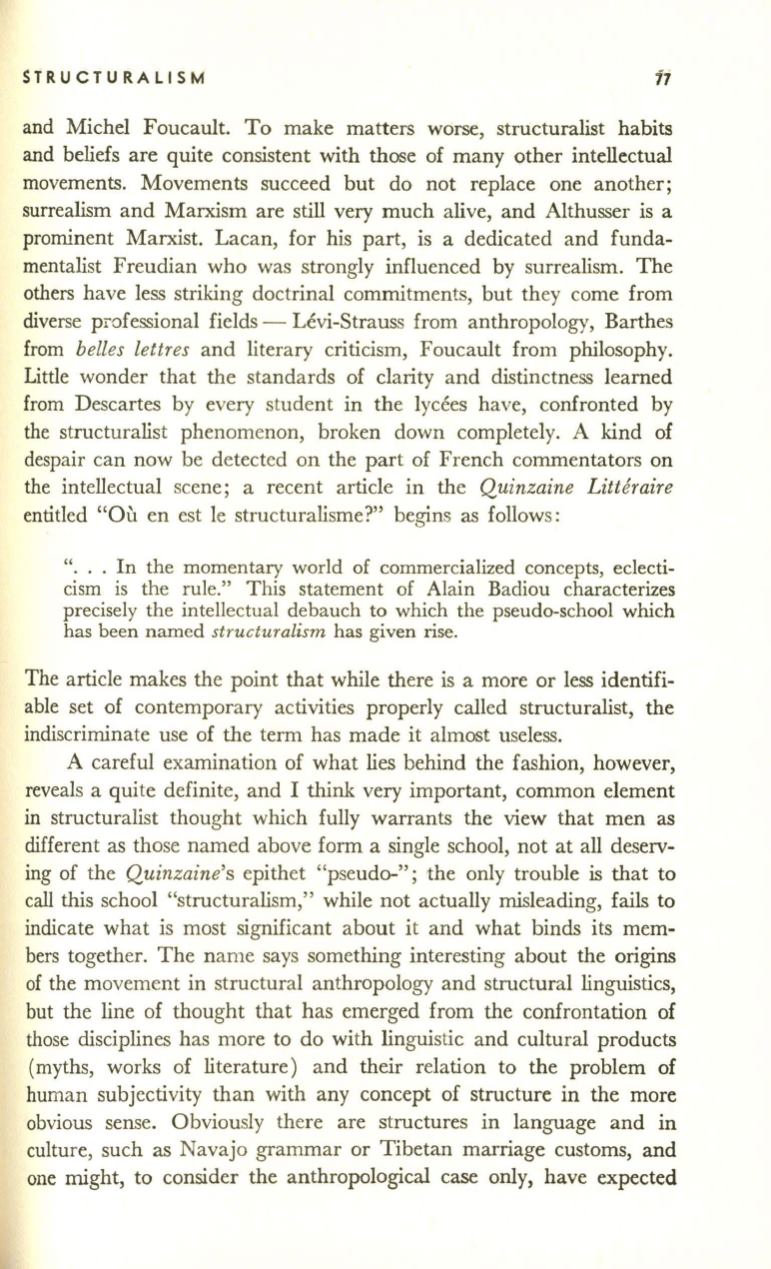
STRUCTURALISM
17
and Michel Foucault. To make matters worse, structuralist habits
and beliefs are quite consistent with those of many other intellectual
movements. Movements succeed but do not replace one another;
surrealism and Marxism are still very much alive, and Althusser is a
prominent Marxist. Lacan, for his part, is a dedicated and funda–
mentalist Freudian who was strongly influenced by surrealism. The
others have less striking doctrinal commitments, but they come from
diverse professional fields - Levi-Strauss from anthropology, Barthes
from
belles lettres
and literary criticism, Foucault from philosophy.
Little wonder that the standards of clarity and distinctness learned
from Descartes by every student in the lycees have, confronted by
the structuralist phenomenon, broken down completely. A kind of
despair can now be detected on the part of French commentators on
the intellectual scene; a recent article in the
Quinzaine Litteraire
entitled "OU en est Ie structuralisme?" begins as follows :
". .. In the momentary world of commercialized concepts, eclecti–
cism is the rule." This statement of Alain Badiou characterizes
precisely the intellectual debauch to which the pseudo-school which
has been named
structuralism
has given rise.
The article makes the point that while there is a more or less identifi–
able set of contemporary activities properly called structuralist, the
indiscriminate use of the term has made it almost useless.
A careful examination of what lies behind the fashion, however,
reveals a quite definite, and
I
think very important, common element
in structuralist thought which fully warrants the view that men as
different as those named above form a single school, not at all deserv–
ing of the
Quinzaine's
epithet "pseudo-"; the only trouble is that to
call this school "structuralism," while not actually misleading, fails to
indicate what is most significant about it and what binds its mem–
bers together. The name says something interesting about the origins
of the movement in structural anthropology and structural linguistics,
but the line of thought that has emerged from the confrontation of
those disciplines has more to do with linguistic and cultural products
(myths, works of literature) and their relation to the problem of
human subjectivity than with any concept of structure in the more
obvious sense. Obviously there are structures in language and in
culture, such as Navajo grammar or Tibetan marriage customs, and
one might, to consider the anthropological case only, have expected


